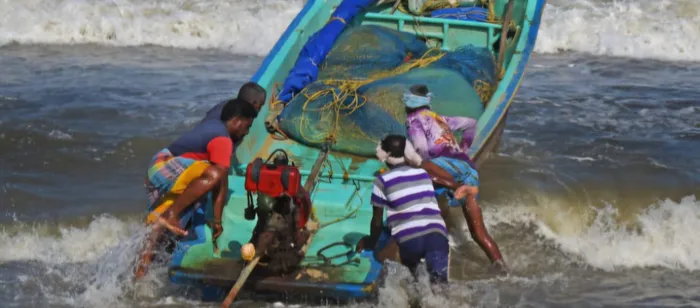KZN's fishing heritage: Indian contributions and the battle for sustainability

The boats still being used by fishermen in India, while Indian fisherman in South africa have moved to more modern, fast and stable boats
Image: SUPPLIED
EXPLORE the rich tapestry of Indian influence on KwaZulu-Natal's (KZN) fishing industry, from traditional netting techniques to cultural exchange, while examining the pressing challenges facing modern fishing communities both in South Africa and India, writes professional angler JACE GOVENDER, who is currently in India on holiday.
WHILE there isn't extensive documentation on the specific impact of Indians from India on KZN's fishing industry, we can explore some potential areas of influence.
Indian cuisine, particularly in South Africa, has a significant following in KZN.
The demand for fresh seafood, including fish and prawns, might have contributed to the growth of the fishing industry in the region. Indian businessmen have invested in various sectors of the South African economy, including fishing and aquaculture. T
his investment could have led to the introduction of new fishing technologies, practices, and management techniques. The Indian diaspora in South Africa, particularly in KZN, has contributed to the region's cultural diversity. This cultural exchange might have influenced local fishing practices, including netting techniques, or the types of seafood consumed.
Regarding netting practices, KZN has a significant commercial and recreational fishing industry. The province's fisheries are managed by the Department of Fisheries Forestry and Environmental and Affairs which regulates netting practices to ensure sustainability.
Some common netting practices in KZN include:
Beach seine netting involves using vertical nets to catch fish, often targeting species like sardines, mackerel, and other bait fish
Cast netting is a technique involves throwing a circular net into the water, which then sinks to the bottom, trapping fish.
Purse seine netting involves using a large net to encircle a school of fish, which is then closed at the bottom to trap the catch.
While the specific influence of Indians on netting practices in KZN might not be well-documented, it's likely that local fishing communities, including those with Indian heritage, have contributed to the development of the region's fishing industry.
The challenges facing India's fishing industry
As I reflect on the state of India's fishing industry, I am compelled to express my deep concern about the numerous challenges it faces. Despite being a vital source of livelihood for millions, the industry is plagued by a multitude of issues that hinder its growth and development.
In my opinion, one of the primary reasons for the industry's poor performance is the lack of adequate infrastructure. The absence of modern cold storage facilities, efficient transportation networks, and sophisticated processing units leads to significant post-harvest losses. Furthermore, the reliance on traditional, non-mechanised boats and low-quality nets limits the ability of fishermen to venture into deeper waters and catch fish efficiently.
The industry is also grappling with environmental challenges. Water pollution from industrial waste, pesticides, and sewage is degrading aquatic habitats and threatening fish populations. Climate change is another major concern, as warming seas, increased cyclonic activity, and unpredictable monsoons are disrupting breeding patterns, changing fish migration routes, and causing more frequent and intense storms that damage boats and reduce fishing days.
Moreover, the industry is facing socio-economic challenges. Many small-scale fishers lack financial access to modern equipment and often operate with outdated technology, further limiting their productivity and profitability. The overall catch is often low, leading to low incomes for many in the community. Fishing communities are also vulnerable due to low incomes, lack of social security measures, and market exclusion.
To address these challenges, I believe that the government and other stakeholders must work together to provide financial support, modernize infrastructure, and promote sustainable fishing practices. This can include initiatives such as providing subsidies for modern equipment, improving access to credit and insurance, and implementing policies to reduce pollution and protect marine habitats.
By working together, we can help ensure the long-term sustainability of India's fishing industry and improve the livelihoods of those who depend on it.